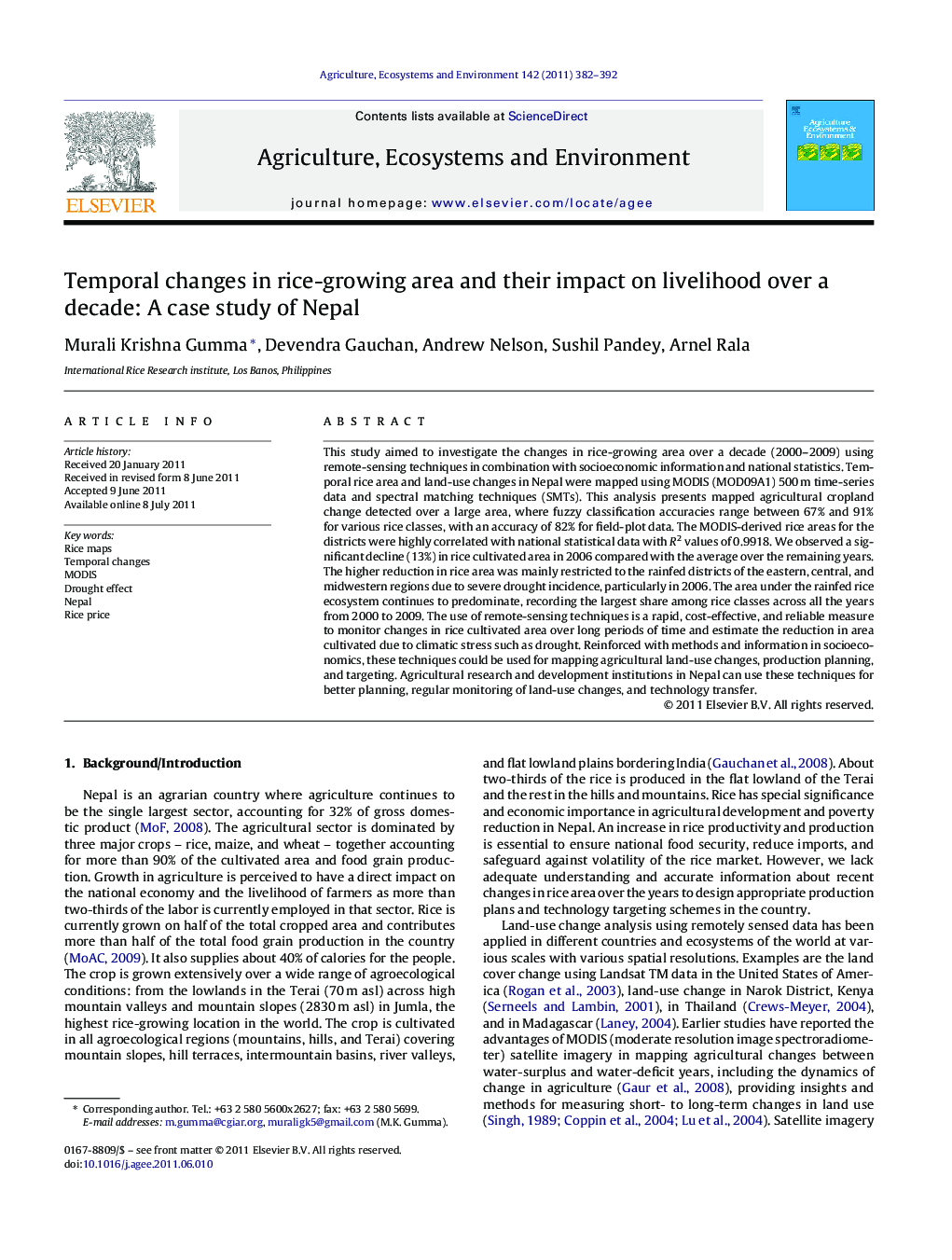| کد مقاله | کد نشریه | سال انتشار | مقاله انگلیسی | نسخه تمام متن |
|---|---|---|---|---|
| 2414685 | 1552106 | 2011 | 11 صفحه PDF | دانلود رایگان |

This study aimed to investigate the changes in rice-growing area over a decade (2000–2009) using remote-sensing techniques in combination with socioeconomic information and national statistics. Temporal rice area and land-use changes in Nepal were mapped using MODIS (MOD09A1) 500 m time-series data and spectral matching techniques (SMTs). This analysis presents mapped agricultural cropland change detected over a large area, where fuzzy classification accuracies range between 67% and 91% for various rice classes, with an accuracy of 82% for field-plot data. The MODIS-derived rice areas for the districts were highly correlated with national statistical data with R2 values of 0.9918. We observed a significant decline (13%) in rice cultivated area in 2006 compared with the average over the remaining years. The higher reduction in rice area was mainly restricted to the rainfed districts of the eastern, central, and midwestern regions due to severe drought incidence, particularly in 2006. The area under the rainfed rice ecosystem continues to predominate, recording the largest share among rice classes across all the years from 2000 to 2009. The use of remote-sensing techniques is a rapid, cost-effective, and reliable measure to monitor changes in rice cultivated area over long periods of time and estimate the reduction in area cultivated due to climatic stress such as drought. Reinforced with methods and information in socioeconomics, these techniques could be used for mapping agricultural land-use changes, production planning, and targeting. Agricultural research and development institutions in Nepal can use these techniques for better planning, regular monitoring of land-use changes, and technology transfer.
• Mapping of temporal rice and land use change using GIS and remote sensing methods.
• Validated the correlation between the generated rice map and national statistics.
• Examined the changes in price, area and production of rice using socioeconomic data.
• Targeted drought areas to promote stress tolerant varieties.
• Promote usage of this method to strength planning and targeting of R & D programs.
Journal: Agriculture, Ecosystems & Environment - Volume 142, Issues 3–4, August 2011, Pages 382–392